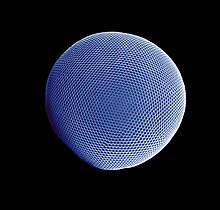Our website is made possible by displaying online advertisements to our visitors.
Please consider supporting us by disabling your ad blocker.
Compound eye

A compound eye is a visual organ found in arthropods such as insects and crustaceans. It may consist of thousands of ommatidia,[1] which are tiny independent photoreception units that consist of a cornea, lens, and photoreceptor cells which distinguish brightness and color. The image perceived by this arthropod eye is a combination of inputs from the numerous ommatidia, which are oriented to point in slightly different directions. Compared with single-aperture eyes, compound eyes have poor image resolution; however, they possess a very large view angle and the ability to detect fast movement and, in some cases, the polarization of light.[2] Because a compound eye is made up of a collection of ommatidia, each with its own lens, light will enter each ommatidium instead of using a single entrance point. The individual light receptors behind each lens are then turned on and off due to a series of changes in the light intensity during movement or when an object is moving, creating a flicker-effect known as the flicker frequency, which is the rate at which the ommatidia are turned on and off– this facilitates faster reaction to movement; honey bees respond in 0.01s compared with 0.05s for humans.[3]
- ^ "Senses. Insect eyes". Insects and Spiders of the World. Volume 8: Scorpion fly - Stinkbug. New York: Marshall Cavendish. 2003. p. 459. ISBN 978-0761473428.
- ^ Völkel, R.; Eisner, M.; Weible, K.J. (June 2003). "Miniaturized imaging systems" (PDF). Microelectronic Engineering. 67–68 (8): 461–472. doi:10.1016/S0167-9317(03)00102-3. Archived from the original (PDF) on 2008-10-01.
- ^ Biologically Inspired Computer Vision: Fundamentals and Applications
Previous Page Next Page


